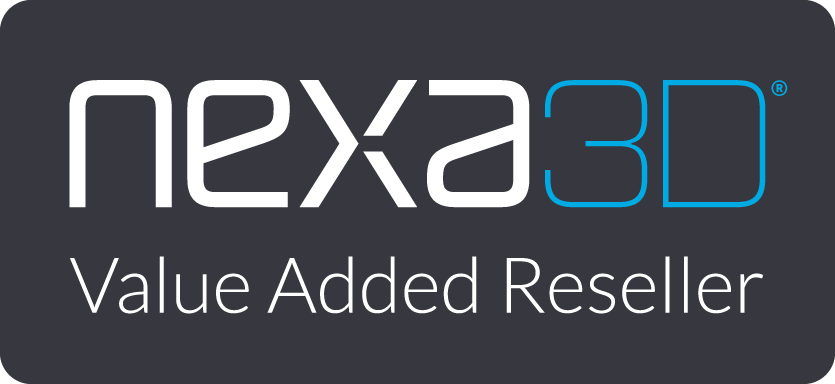3D printed molds: The ultimate guide
3D-printed tools refer to the use of additive manufacturing technology to produce customized tools for manufacturing or production processes. These tools may include jigs, fixtures, molds, and other devices that aid in the production of detailed parts or objects.
Tools and molds are often produced using subtractive manufacturing techniques, which can be time-consuming and expensive, especially for complex or one-off designs. However, 3D printing makes it possible to create customized tools in less time and at lower cost, without compromising on precision or quality.
What is 3D-printed toolmaking for molds?
3D-printed toolmaking is the process of using 3D printing to create molds, jigs, fixtures and other custom tools for production. These tools are ideal for creating complex shapes that would be difficult or impossible to produce using conventional manufacturing techniques.
To create a mold using 3D printing, a 3D CAD model of the part is first created. This model is then converted into a G-code, a 3D file format that a 3D printer can read. The G-code file is then sent to the printer for printing. Once the mold has been 3D printed, it is tested and used in production by filling it with materials such as plastic and metal. As soon as the material cools and hardens, it takes on the shape of the mold.
This process is faster and more effective than conventional methods of mold production, which use CNC machining or manual production. It also allows for greater mold customization and eliminates the need to manufacture tool components with expensive machining processes.
Production with 3D-printed molds

Molds
Molding is a type of production in which molds are made from a liquid material. The casting molding process begins with heating a raw material until it becomes liquid. The liquid is then poured into a mold created by 3D printing or another method. When the material cools and hardens, it takes on the shape of the mold.
This technology is used to produce high-quality parts with complex geometries and tight tolerances without the need for tools. Molds can be used for various materials, including plastics, resins, metals and ceramics.
Injection molding
In injection molding, a molten material, usually plastic, is injected into a custom mold (in this case created by a 3D printer) to produce a part or product with a specific shape and size.
This method is typically used in mass production applications and can help manufacturers achieve a high level of precision and repeatability. Injection-molded parts require only minimal post-processing and often have a better surface quality compared to other molding processes.
Freeform Injection Molding
The patented Freeform Injection Molding (FIM) process uses ultra-fast Nexa3D printers and xMOLD resin to print injection molds that are compatible with thousands of commercially available injection molding materials, including high-performance reinforced raw materials. The ability to design, iterate and validate in hours rather than weeks using end-production materials is invaluable in any product development process.
The FIM process creates fully detachable molds, allowing true design freedom and eliminating time-consuming design and sprue considerations normally associated with traditional tooling processes. You can quickly design and print molds for highly complex parts, use injection molding raw materials, and then dissolve the mold to reveal the complex shape underneath.
3D printing mold materials
Materials such as titanium, aluminum, steel and plastics can be used to produce molds of varying complexity and accuracy. The choice of material often depends on the specific requirements of the product, the type of molding process and the type of 3D printing technology used.
3D-printed molds made from resin material
Resins are the most commonly used material for 3D printing molds. They can produce high-quality and precise parts with various properties, including hardness, thermal resistance, chemical resistance and flexibility. These parts also require less post-processing, as resin 3D printing can deliver finer details and a smoother surface than other 3D printing technologies.
The ideal molding materials include xPEEK and xCERAMIC: two resins that are extremely rigid and heat-resistant and are therefore suitable for prototypes and end-use parts. Resins developed by Addifab, a leading supplier of injection molding tools, even allow molds to be dissolved to create more complex geometries.
3D printing of silicone molds
3D-printed elastomers such as xFLEX475 can be used to produce silicone-like shapes. These highly flexible materials offer superior impact resistance compared to other molded materials. They are often ideal for applications where flexibility is required, for example for overmolding or rubber parts.
Advantages of the 3D-printed molded part
3D-printed tools for the production of molds offer several advantages over conventional manufacturing techniques.
Reduced lead time
3D printed molding enables the rapid production of molds and tooling, as builders can produce multiple parts or entire assemblies at once, eliminating the need to cut or shape materials from larger blocks or sheets.
For example, the Nexa3D XiP 3D printer has a build time of around 87 minutes, allowing builders to produce parts up to ten times faster than other leading 3D printers on the market. This reduces the lead time from weeks or months to just a few hours.
Furthermore, as 3D printed molds are ready to use as soon as they are completed, product development cycles can be shortened, allowing for faster prototyping and testing.
Cost savings
3D printed tooling is usually significantly cheaper and requires a smaller investment in materials and labor. 3D printing is an additive process and while in subtractive manufacturing, parts are created by cutting away materials from a block until the desired shape is achieved.
Additive manufacturing builds objects layer-by-layer, resulting in less waste and reduced need for materials. This enables businesses to save on inventory costs by only producing essential parts and products. And results in manufacturers being able to lower production costs while still producing high-quality parts. Moreover, since these tools are highly customizable and can be printed on demand, they are ideal for short production runs and low-volume manufacturing.
Increased precision
In addition, 3D-printed mold components are extremely precise due to their advanced software and control systems, enabling greater accuracy in production. This makes 3D printed molds ideal for complex parts with tight tolerances or intricate details that would otherwise be difficult to achieve using conventional methods.
For example, a high-quality industrial 3D printer such as the NXE400Pro has an integrated patented Lubricant Sublayer Photo-Curing (LSPc®) technology that delivers the required accuracy and tolerances with an excellent surface finish. With the LSPc®, the layers do not stick together during production and ensure accuracy and tolerances as well as an excellent surface quality. This makes it ideal for producing intricate shapes and parts with tight tolerances or fine details.
The materials used in 3D printing can offer a better surface finish compared to machined metal, so no additional post-processing or finishing is required. This also leads to improved part quality and better molding performance.
Reduced tool complexity
Conventional mold making methods require multiple tooling and manufacturing steps, which increases process complexity and lead times. Traditional manufacturing methods such as injection molding or machining require the production of molds or tools to transform raw materials into finished products. This process can take some time and adds an extra step to the manufacturing process.
3D printing reduces the amount of tools required, as the printer can create the product directly from a CAD file. 3D printing enables a one-step mold making process that can help simplify the manufacturing process and improve efficiency.
Iterative designs
With 3D printing, designers and engineers have the freedom to create new iterations of prototypes without having to wait for long production cycles or worry about tooling costs. Multiple versions of a prototype can be produced simultaneously with one machine, enabling rapid testing, evaluation and modification.
In addition to this flexibility, 3D printing also enables the production of complex geometries and intricate designs that may not be feasible with conventional manufacturing methods. This ability to quickly develop innovative products can lead to greater product success and higher customer satisfaction.
In addition, rapid prototyping with 3D printing offers improved accuracy and durability of parts, less production waste and the ability to produce end-use parts.
Challenges in 3D-printed mold making
Although 3D printing offers several advantages over conventional mold making techniques, there are some challenges to overcome. The biggest challenges with 3D-printed molds include
Material properties
The mechanical properties of 3D printing materials may not always be suitable for molding applications, especially for high-temperature or high-pressure processes. Manufacturers must carefully select the appropriate 3D printing material and 3D printer for their application.
Surface finish
Depending on the material and printer used, post-processing, such as curing, polishing and texturing, may also be required to achieve the desired surface finish. For example, FDM printers require much more advanced processing than resin 3D printers. Resin 3D printers can also print at a low resolution of 10 micrometers, which is much finer than the resolution of filament 3D printers.
Durability of the mold
While 3D printed molds can be durable (especially when made from durable resins or reinforced 3D printing material), machined metal molds end up lasting longer. When users are injection molding hundreds of thousands of parts, it can therefore make sense to use a machined mold.
Size restrictions
The size of the 3D printer can limit the size of the shape that can be printed. Large shapes may need to have larger sections for printing. This can increase lead times and costs, as the parts have to be assembled and reworked before they are ready for use.
Examples of 3D-printed molded parts
The application of 3D printed molds in various industries, including automotive, medical, electronics, packaging and more.
A perfect example of a 3D-printed mold application is the development of food packaging and bottles. For example, PepsiCo uses the NXE 400 3D printer and xPEEK147 material to reduce prototype tooling development time from 4 weeks to 48 hours, reduce prototype tooling costs from $10,000 to $350 per mold set, and develop durable tooling that can produce more than 10,000 bottles 96% cost reduction.

Wilson Sporting also uses 3D printing technology for rapid prototyping. With Nexa3D’s large print area and ultra-fast LSPc® process, Wilson’s research and development group can now produce multiple parts simultaneously and quickly. This enables multiple design iterations in a single print batch. Thanks to this advancement, the team can create a prototype in a single day, a process that would previously have taken months.
“Because we can iterate so much faster, print tools faster than we can machine them and eliminate a few steps in the process, our R&D team can afford to make mistakes. This helps us significantly reduce our time to market and allows us to have a fast and flexible design decision process.” –
Glen Mason
Manager of Advanced Innovation/Industrialization, DeMarini (a division of Wilson Sporting Goods)

Wilson Sporting Goods x Nexa3D
Another example of a 3D-printed mold application is the Freeform Injection Molding (FIM) platform, which expands the possibilities of industrial injection molding through ultra-fast, large-format 3D printing. The FIM platform, created through a partnership between 3D printed tooling pioneer Addifab and Nexa3D, enables users to additively manufacture complex injection molds in just a few hours by combining Addifab and NXE 400Pro capabilities.
The tools are compatible with most thermoplastic materials and can even be dissolved. This makes it possible to form complex components that would otherwise be very difficult or even impossible to form with conventional metal tools.
Use the best 3D printer for 3D printed molds
3D printed molds are most effective when the perfect 3D printing technology and materials are used. Therefore, choosing the right 3D printer and material is important for the success of any 3D printed mold project.
With a range of advanced features and materials, Nexa3D’s ultra-fast 3D printers offer a perfect solution for any 3D printed mold job. Nexa3D 3D printers are characterized by ultra-fast printing speed and high-quality print resolution – making them the right choice for efficient and effective 3D printed molding.
Are you looking for the best 3D printing solution for your 3D printed molded part project?
Check out our materials guide to explore the different materials and properties that are perfect for 3D printed molds.


